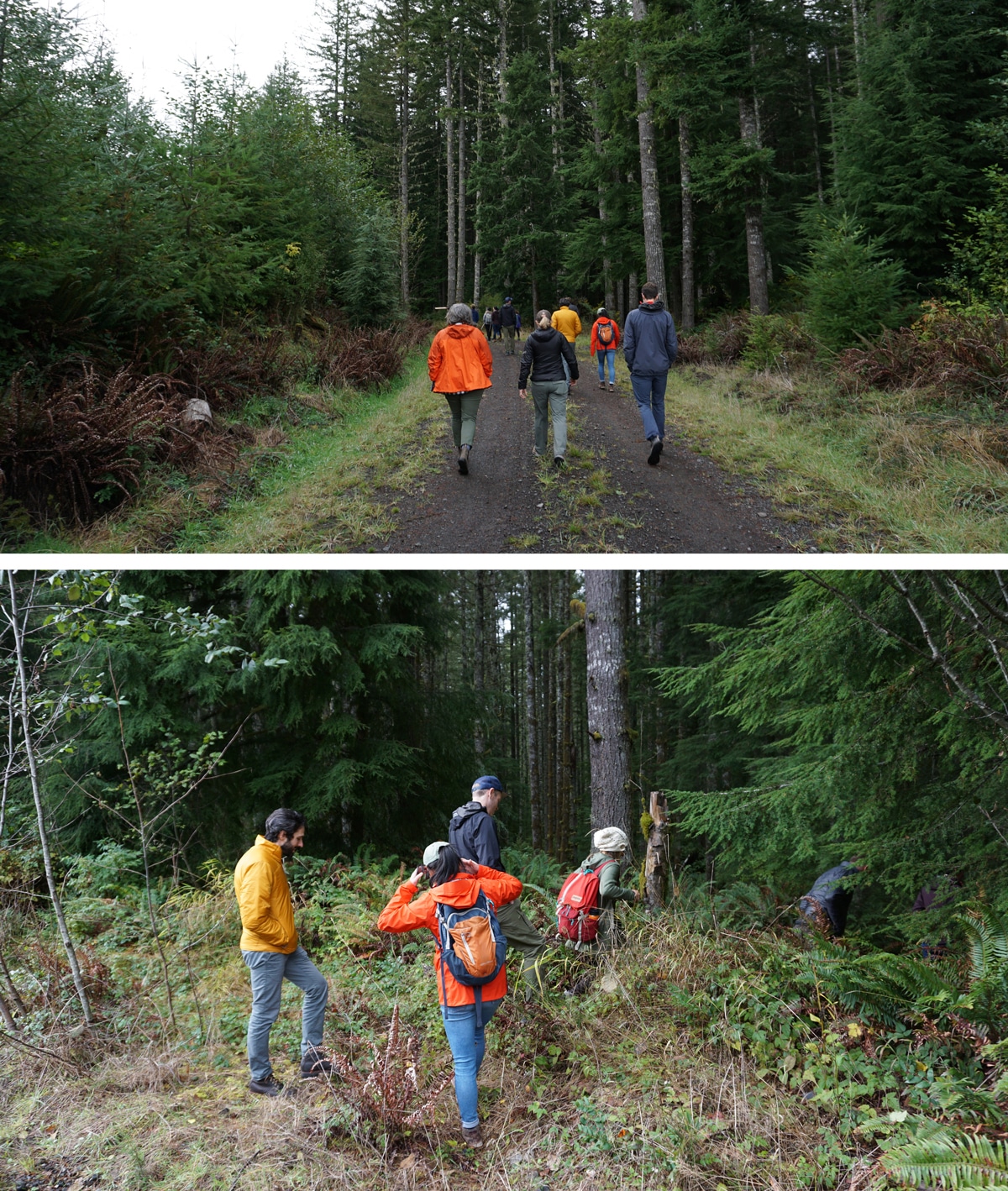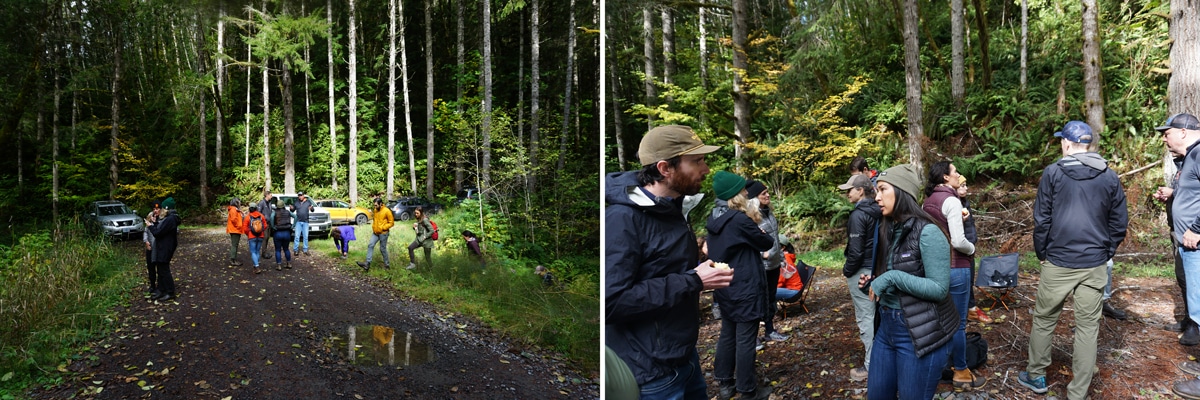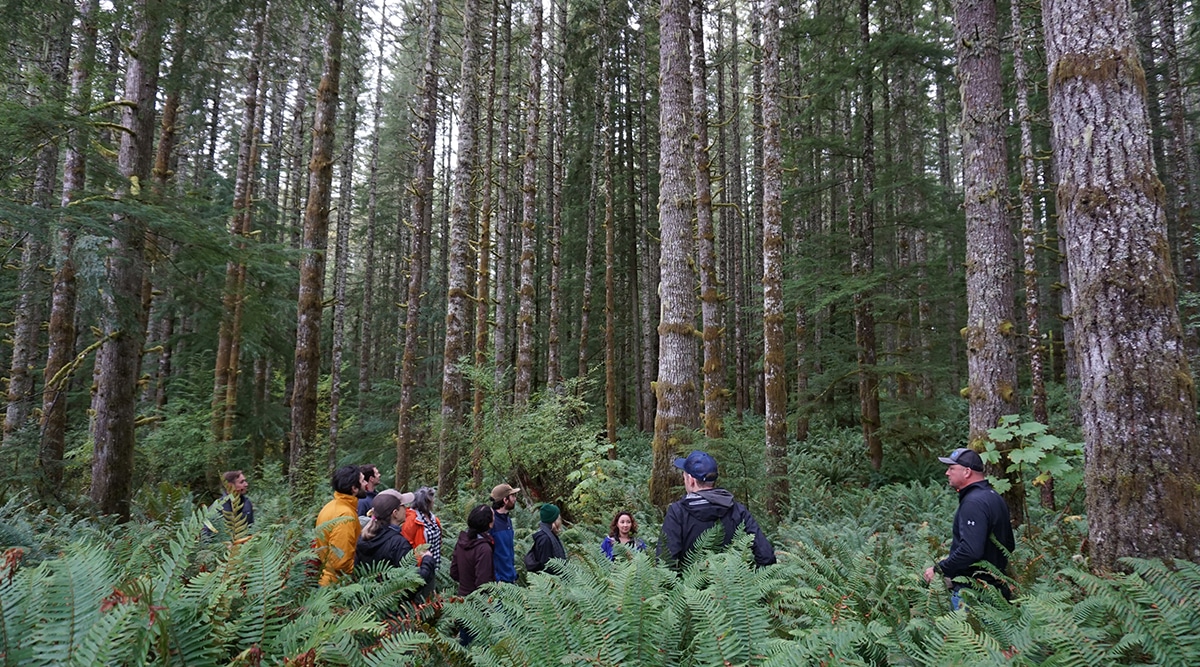The voluntary carbon market is experiencing never-before-seen growth. With the degree to which governments and corporations around the world are signing on to ambitious emission reduction targets, it’s clear that carbon credits will be part of a larger global net zero strategy. With unprecedented growth comes new opportunities for voluntary carbon investments. Many industry leaders are committing to, or have already invested in, innovative nature-based or technology-based solutions that will help them achieve their future net zero targets. While the voluntary carbon market will continue to scale, we’re already seeing examples of real impact today.
Proof of this can be found deep within the vast forest region of rural southern Washington, where you can find imposing Douglas firs and lush, five-foot ferns. North of Mt. St. Helens, sprawling along the banks of a crystal-clear lake and in close proximity to its namesake Winston Creek, is the Winston Creek Forest Carbon Project. The project is owned by Port Blakely, a fifth-generation, family-owned and operated sustainable timber company with a mission to “cultivate a healthy world” by implementing and advocating for progressive forest management practices.
Recently, Port Blakely invited 3Degrees and members of the Sustainability team at REI Co-op to break away from our computer screens and spend a day immersed in the fresh air of the Winston Creek Forest.
WATCH THE VIDEO
 REI’s commitment to the Winston Creek Forest Project
REI’s commitment to the Winston Creek Forest Project
Founded in 1938, REI has long incorporated environmentally-ethical business practices into its operation. Earlier this year, the long-time 3Degrees customer announced that it had achieved its 14-year carbon neutrality commitment. This commitment involved balancing its residual emissions with an equivalent investment in the sequestration or avoidance of emissions through the purchase of carbon credits. REI has also set a target to more than halve its emissions by 2030.
REI worked with 3Degrees to construct a diverse portfolio of high-quality carbon projects that both sequester and avoid GHG emissions, as well as support environmental and social co-benefits. As part of this portfolio, REI invested in the Winston Creek Forest Carbon Project. For REI, an organization dedicated to helping everyone experience the transformational power of nature, supporting this project was a natural extension of its commitment to the environment. And the fact that the Co-op’s headquarters is located just over 70 miles to the north of this dense forest, made the project all the more attractive.
Lessons in improved forest management
Mike Warjone, a fourth-generation descendant of Port Blakely’s founders and President of US Forestry at Port Blakely, along with Senior Director of Communications, Stacey Klum, greeted us with friendly smiles. As the sun timidly peeked through the clouds on this damp fall Pacific Northwest morning, Mike, with his booming, yet warm voice began what would be a 3+ hour education on sustainable forest management. He described the challenges that Port Blakely is up against. In a competitive market that doesn’t always reward improved forestry practices, the carbon project has allowed them to grow the trees in this forest nearly three decades longer than the industry standard.
 Mike first brought us to a grove of 35-year old Douglas firs. As we peered around the thick spans of trees, one thing became clear: the forest was almost entirely homogeneous, with some low-lying undergrowth. This stand is representative of the industry standard for harvesting Douglas fir. In fact, most mills are designed to process this size of tree and cannot handle the older, larger trees. What this means for companies like Port Blakely, is that the market for larger trees has significantly declined over the last decade or more, making the need for alternate revenue sources such as participating in the voluntary carbon market even more critical.
Mike first brought us to a grove of 35-year old Douglas firs. As we peered around the thick spans of trees, one thing became clear: the forest was almost entirely homogeneous, with some low-lying undergrowth. This stand is representative of the industry standard for harvesting Douglas fir. In fact, most mills are designed to process this size of tree and cannot handle the older, larger trees. What this means for companies like Port Blakely, is that the market for larger trees has significantly declined over the last decade or more, making the need for alternate revenue sources such as participating in the voluntary carbon market even more critical.
As we made our way over knotted tree roots and dense ground vegetation, Mike brought us to another, very distinct area of the forest. Standing among 60 year old trees, there was a stark difference. This section of the forest was teeming with undergrowth, a much more diverse population of tree species, and a healthy smattering of dead and decaying trees, which provide homes to many of the local fauna. It was here that Mike explained to us what carbon credits allow his organization to do. The added 25+ years of growth for the forest exponentially increases its carbon storage potential. We were looking at thousands of extra pounds of stored carbon in every one of these trees which would not have occurred without the incentive from the carbon investment, and subsequently customers like REI supporting the project.

Carbon credits’ role in immediate climate action
Making our way back toward our cars, Mike paused to instill one more important point: He and his company are more than aware that carbon credits are not the long-term solution. They are indeed an effective and immediate tool for supporting carbon reduction activities, however, they really serve as a bridge to longer term solutions. The real opportunity lies in change-making policy, in creating a meaningful and universally understood price on carbon, and working collectively to reduce greenhouse gases from being emitted into the atmosphere in the first place.
Talk about breath of fresh air. It was refreshing to see an example of companies choosing to make this type of investment, not because of its impact on the bottom line, or because of the marketing claims that can be made, but because the planet requires bold action. Port Blakely and REI exemplify the types of businesses that are helping to shape the net zero economy. It was a privilege to spend the day in the woods with these folks — companies that fully understand the challenges that lay ahead and are committed to taking action against climate change.



